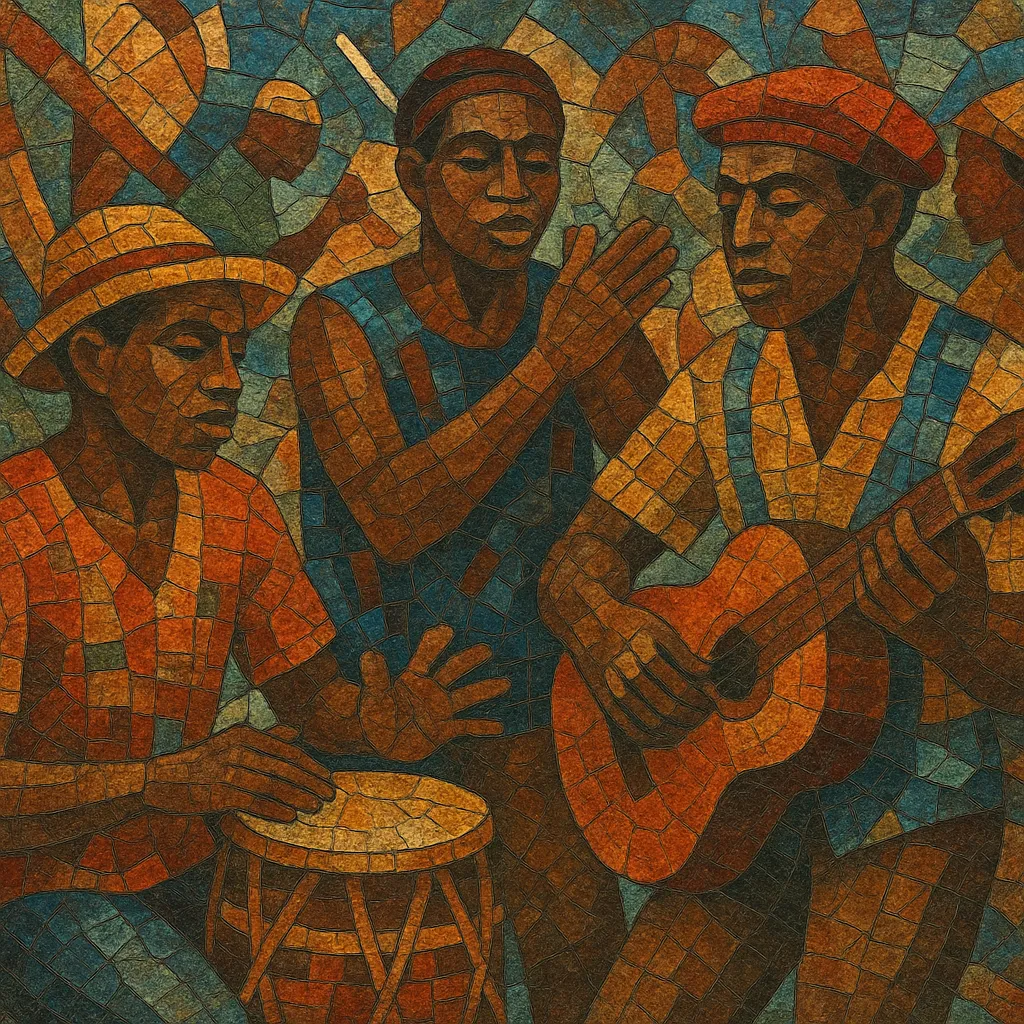Kilapanga is a traditional Angolan carnival rhythm and dance associated with the coastal urban culture of Luanda. It is one of the signature processional styles heard during the Carnaval da Luanda, alongside related forms such as kazukuta and kabetula.
The music is driven by interlocking percussion, handclaps, and call‑and‑response vocals, creating a buoyant, forward‑pushing groove suited to street parades. While primarily percussive, ensembles may add guitars, bass, whistles, and occasional brass to project the rhythm over outdoor spaces. The feel is typically duple (heard in 2) with cross‑rhythms that can also be felt in a lilting 6/8, producing a lively, swinging propulsion for dancers.
Culturally, kilapanga functions as a vehicle for neighborhood identity, satire, and celebration. Lyrics often mix Kimbundu and Portuguese, referencing local history, everyday life, and carnival themes.
Kilapanga emerged in mid‑20th‑century Luanda as part of a constellation of Angolan carnival rhythms developed by urban communities with roots in Kimbundu cultural practice. Its formation coincided with the growth of organized carnival groups, whose parading and choreographed formations required strong, portable, and participatory percussion grooves.
During the colonial period, local percussion traditions interfaced with European processional formats (marches and brass/perc bands), shaping kilapanga into a distinctly parade‑ready rhythm. The call‑and‑response singing style—already central to communal music—became a hallmark in street performance, where large groups could easily join refrains.
After Angolan independence (1975), kilapanga remained a core sound of the Carnaval da Luanda, continuing to symbolize neighborhood pride and continuity with pre‑ and post‑independence cultural memory. Popular urban ensembles and singers helped bring carnival rhythms (including kilapanga) onto stages and recordings, preserving the style’s identity while adapting instrumentation for amplified contexts.
Today, kilapanga persists in carnival competitions and community festivities. While studio genres like semba, kizomba, and kuduro dominate commercial charts, kilapanga’s parade groove, chants, and choreography remain essential to Luanda’s cultural calendar and to intergenerational transmission of Angolan musical heritage.


